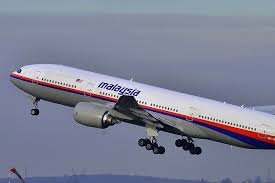
More than 11 years after Malaysia Airlines Flight MH370 vanished, the Malaysian government has greenlit a fresh search for the missing aircraft. The renewed effort, spearheaded by seabed exploration firm Ocean Infinity, marks the latest attempt to uncover the fate of the ill-fated flight that disappeared with 239 people on board.
A Renewed Search with Advanced Technology
Malaysia had initially announced the renewed search last year, a decade after the tragedy. Ocean Infinity, which previously conducted an unsuccessful search in 2018, presented a new proposal that was approved in principle by the Malaysian government in December 2023.
Now, the company has deployed a cutting-edge fleet of autonomous underwater vehicles (AUVs) in the southern Indian Ocean, approximately 1,500 kilometers west of Perth, Australia. These state-of-the-art tools are expected to enhance the chances of locating MH370’s wreckage.
Search Area the Size of Sydney
The newly designated search zone, roughly the size of metropolitan Sydney, was determined through refined analysis of available data, including weather patterns, satellite tracking, and debris findings. Experts collaborated to identify the most promising area based on fragments of the aircraft that washed up along African coastlines and Indian Ocean islands.
Ocean Infinity’s past successes bolster confidence in the mission. In 2018, the company located a missing Argentinian navy submarine nearly 1,000 meters underwater in the Atlantic Ocean. More recently, in October 2023, it discovered a US Navy ship that had been lost for 78 years.
High-Tech Equipment and Sonar Systems
Ocean Infinity’s new search is powered by the Armada 7806, a 78-meter offshore support vessel built in 2023 by Norwegian shipbuilder Vard. The vessel carries an array of AUVs, each 6.2 meters long and capable of operating independently at depths of up to 6,000 meters for as long as 100 hours.
These AUVs are equipped with advanced sonar systems, including:
- Sidescan sonar – Captures high-resolution images of the seafloor.
- Synthetic aperture sonar – Combines multiple sonar pings to enhance resolution.
- Multibeam sonar – Maps seafloor topography using a fan-shaped sonar beam.
- Sub-bottom profiling sonar – Penetrates the seabed to identify buried objects and geological structures.
Camera systems and lights will be deployed to verify any detected targets. If a potential wreck site is found, the AUVs will be programmed to capture close-up imagery, aiding in identification.
Significant Advances in Robotics
Since the previous 2018 search, Ocean Infinity has made significant strides in marine robotics and data analytics. The company now has the capability to deploy multiple AUVs simultaneously, drastically improving search efficiency. The collected data will be retrieved when the AUVs are brought back on board, then processed to create highly detailed maps of the ocean floor.
Challenges Ahead
Despite these technological advancements, the operation is expected to be challenging. The search zone features rough underwater terrain, including steep slopes, while surface weather conditions could further complicate the mission. The entire operation is projected to last up to 18 months, with optimal weather conditions expected between January and April.
High Stakes and Future Steps
The Malaysian government has agreed to a “no find, no fee” contract, meaning Ocean Infinity will only be compensated if the wreckage is discovered. If successful, the company will receive a payment of $70 million.
Should MH370’s wreckage be located, the next step would be retrieving the plane’s black boxes, which could provide crucial insights into what happened in the aircraft’s final moments. The Armada 7806 is expected to carry remotely operated vehicles equipped with cameras and manipulators, which may be instrumental in future salvage operations.
However, if the search fails, the mystery of MH370 will remain unresolved, and efforts to find the missing aircraft will be back to square one.
A Long-Awaited Breakthrough?
For the families of the passengers and crew aboard MH370, this renewed search represents a fresh glimmer of hope. Whether this mission will finally provide the answers they have been seeking for over a decade remains to be seen.
Sources By Agencies


